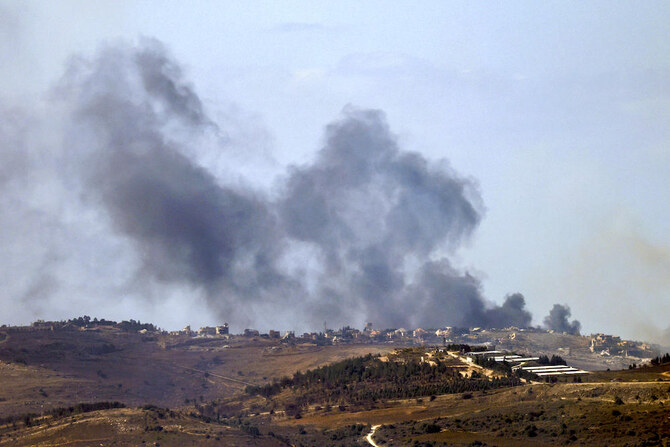
- ARAB NEWS
- 01 Aug 2025

BEIRUT: Israel has temporarily excluded areas in southern Lebanon from the ceasefire agreement approved by the two countries, which came into effect early on Wednesday, as its military continues its withdrawal.
According to a map released by the Israeli military, a line of exclusion currently extends from Shebaa through Habbariyeh, Arnoun, Yohmor, Qantara, Shaqra, Baraashit, Yater, and Mansouri. Operations continue in and south of these areas.
Israeli military spokesperson Avichay Adraee warned that anyone crossing this line “risks danger” due to the “incomplete withdrawal of the Israeli army, which will take 60 days.”
Israeli artillery targeted the town of Shebaa and struck the town square in Taybeh, as well as the towns of Kfarkela, Markaba, injuring two people. Three were wounded in Wazzani, Kfarchouba, Rmeish, Halta, and Al-Ain. Additionally, two houses in Khaim were destroyed.
In another incident, Israeli warplanes raided the Sidon area on Thursday afternoon, specifically the vicinity of the town of Al-Bissariyeh, after the Israeli military claimed that it had “detected a threat in the form of a warehouse containing medium-range missiles for Hezbollah.”
Displaced Lebanese citizens attempted to return to their properties despite warnings from the Lebanese Armed Forces not to.
Soldiers stationed in Maroun Al-Ras opened fire on residents trying to reach their homes on the outskirts of Bint Jbeil.
The municipality of Khiam urged residents to “wait for a statement from the relevant authorities permitting entry into the town,” emphasizing that this depends on “the Lebanese army’s entry procedures following the enemy’s withdrawal from certain streets and positions it is still stationed at.”
The Lebanese military requested residents of Taybeh to evacuate after Israel targeted their gatherings in the town square and the Al-Ain area with three rounds of drone-fired missiles.
It was also recorded that an Israeli interceptor missile was fired toward Lebanon. The military explained that the suspicious target “may have been a bird or a small Israeli drone that was mistakenly identified as a Hezbollah drone.”
Israel later announced “a complete ban on movement or travel south of the Litani River from Thursday at 5 p.m. until Friday at 7 a.m.”
Meanwhile, the Lebanese Army Command announced that “along with the reinforcement of the army’s deployment in the South Litani sector following the implementation of the ceasefire agreement, military units began carrying out their missions in the south, the Bekaa and the southern suburbs of Beirut, including temporary checkpoints, clearing roads and detonating unexploded ordnance.”
UNIFIL spokesperson Andrea Tenenti said that “peacekeepers continue to be present across their operational areas to de-escalate the situation, in accordance with Resolution 1701. UNIFIL continues to work in coordination with the Lebanese Armed Forces, supporting their deployment in the south.”
Hezbollah worked to retrieve the bodies of fighters killed during clashes with the Israeli military in the days before the ceasefire.
Activists on social media circulated news that one unnamed fighter, believed dead and mourned by Hezbollah as a “missing martyr” had miraculously been found alive and returned to his family.